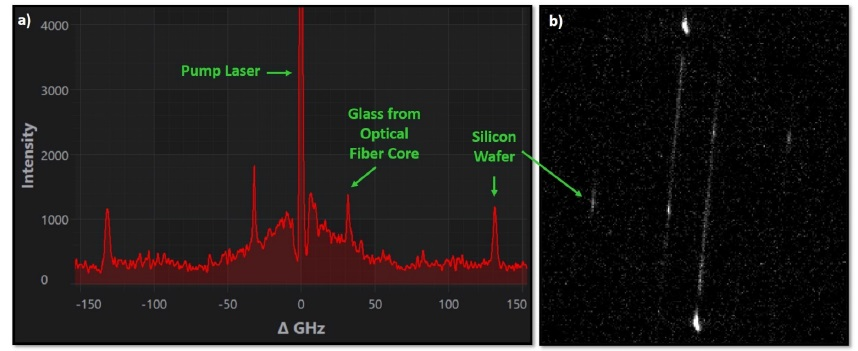Figure 1 illustrates the Brillouin spectrum of a silicon wafer, obtained by using a camera cooled only at -5 °C, restricting the exposure time to ten seconds due to the dark current. The spectrum was averaged fifty times (thus accruing the noise associated with fifty read-out events).

Figure 1. a) Brillouin frequency shift spectrum of a silicon wafer, acquired with a camera cooled only at -5 °C. b) Raw sensor image. The exposure time was set to 10 seconds and the number of averages to 50. Image Credit: LightMachinery
In future work, a deeper cooled camera will be employed in order to enable lengthier exposure time, which will lead to a much greater signal-to-noise ratio with just a few minutes of complete exposure. Even with a short exposure time, the spectrum in Figure 1 displays the system’s immense potential.
The measured Brillouin frequency shift of the silicon wafer is 131.46 ± 0.07 GHz, in agreement with the anticipated shift. The pump laser signal is vastly attenuated (>70 dB) by the two “Pump Killers” utilized by the system.
Specifications
Source: LightMachinery
| Sample |
System |
- The expected Brillouin frequency shift of silicon is around 131.6 GHz (using a longitudinal speed of sound in silicon of 8433 m/s, a refractive index of 4.151, and a pump wavelength of 532.2 nm)
- Material: single crystal silicon wafer
|
- Power at sample: 25 mW
- Pump wavelength: 532.2 nm
- Excitation/collection with 20X objective
- Repeatability of Brillouin shift: highly sample and exposure dependent; <10 MHz is possible
- FWHM of the instrument response: nominal 0.9 GHz
|

This information has been sourced, reviewed and adapted from materials provided by LightMachinery.
For more information on this source, please visit LightMachinery.